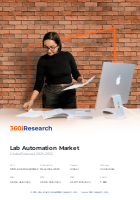
Lab Automation Market by Offerings (Hardware, Services, Software), Type (Modular Automation Solutions, Total Automation Solutions), Stage, Deployment Mode, Application, End Users - Global Forecast 2025-2032
SKU
MRR-EA6D0A205BEC
Region
Global
Publication Date
December 2025
Delivery
Immediate
2024
USD 6.46 billion
2025
USD 6.94 billion
2032
USD 11.81 billion
CAGR
7.82%

Download a Free PDF
Get a sneak peek into the valuable insights and in-depth analysis featured in our comprehensive lab automation market report. Download now to stay ahead in the industry! Need more tailored information? Ketan is here to help you find exactly what you need.



